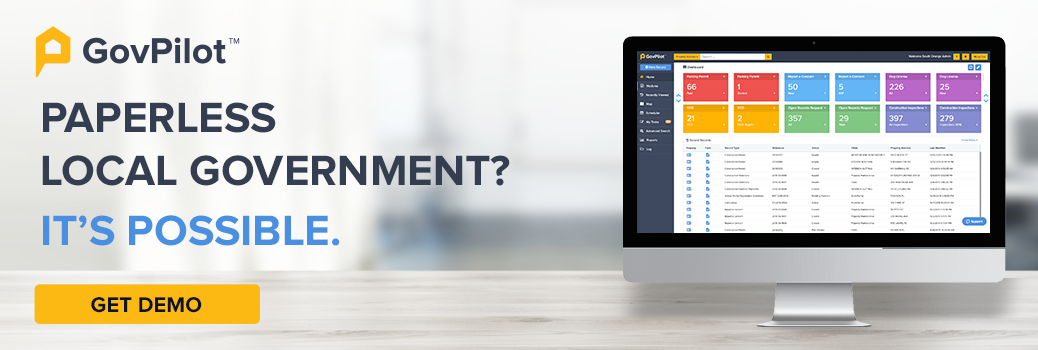Sustainability is growing increasingly more important as we see a decline in crucial resources and increase in natural disasters.
In order to achieve sustainability at the local level, your local government officials will need to get educated on the best eco-friendly practices to make positive infrastructure and policy changes and pass the knowledge on to your constituents.
Read on for details on key ways that your local governments can make your city sustainable, pass more eco-friendly policies, and encourage constituents to get in on the sustainable actions.
Why Does Sustainability Matter at the Local Level?
Local sustainability matters tremendously because change and progress begins locally. If municipalities and county governments nationwide can increase their sustainable practices with the intention to decrease their community’s environmental footprint, their collective efforts will make for a more eco-friendly local government as a whole.
What Are the Benefits of Embracing Sustainability for Local Governments?
Not only will sustainable efforts from your locality benefit the local environment, but will also resonate with your constituents that are growing increasingly more concerned about climate change and sustainability. Plus, sustainable government workflows like paperless filing are better for the environment while simultaneously saving time and money.
Tips for Improving Sustainable City Planning as a Local Government
Considering the environmental impact of major decisions in your local government is key to embracing sustainability.
When government workplaces become more eco-friendly it motivates constituents to do so as well, spreading the positive environmental impacts directly to your neighborhood. We only have one earth, and it is everyone's responsibility to protect it; why not make positive incremental changes on the local level that will increase the quality of life and improve on existing infrastructure.
Here are some tips for becoming a more sustainable city:
1. Make your City more Walkable / Bikeable
There’s no denying that emissions from cars play a major role in climate change. If your locality hasn’t prioritized easy accessibility to local amenities, your neighborhood has a negative impact on both the planet and constituent health.
Reclaiming streets from traffic has been shown to make municipalities more livable, healthier, and more business friendly by increasing foot traffic. Initiatives like road closures for street and sidewalk dining during the pandemic were incredibly successful and well received by residents and business owners alike.
Consider prioritizing walkability and bikeability when allocating infrastructure budgeting in coming years. Doing so will reduce emissions, improve constituent health, and increase local economic development for easily accessible businesses.
2. Encourage Responsible Water Usage
Clean water is a valuable resource which is increasingly difficult to come by in many municipalities due to severe drought and faulty infrastructure. In areas where drought impacts local and regional water sources, consider implementing water use restrictions and asking the public to conserve water. This may include limiting use of sprinklers to water lawns, suggesting that shower lengths be reduced, and that local facilities such as golf courses conserve water. Public awareness about critical water issues can help local governments ensure availability of water and head off any public health emergency due to unsafe drinking water that might have a natural or man made cause.
3. Embrace Digital Governance
Digital government workflows should be used as much as possible because they create a positive environmental impact while also increasing productivity. Embracing online application filing and cloud-based storage of government documentation can let your government switch to a truly paperless local government.
Take a look at the environmental impact of government digital transformation at a glance:
- Cloud-based document storage: Government management software like GovPilot acts as an operating system for your local government, meaning you’ll save time, money, paper, and ink with automated digital filing of paperwork and documents.
- Remote government jobs: Working from the cloud means municipal workers can finally work from outside of the office. That means less gasoline being used on the commute to work (as well as increased government recruitment and retention efforts for your government HR)
- Make your urban transformation more quickly: Prioritizing sidewalks and bike lanes is a fantastic way to show residents that on-foot travel is a welcome and encouraged alternative to driving short distances.
4. Improve on Recycling Workflows
Your public works department has enough on its plate. We get it. That being said, picking up your constituents’ recycling every several weeks or even less frequently is a surefire way for them to not recycle to the best of their ability. Plastic waste winding up in the landfill because your constituents don’t have the recycling bin space to dispose of it all properly is bad for the environment (and inconvenient for your constituents!)
Public works software can help to manage employees and keep recycling and trash disposal processes as efficient and structured as possible.
5. Invest in Resilient Infrastructure
The unfortunate reality is that devastating natural disasters are occurring more often, are more destructive, and are now happening in places with no prior history of disaster due to the impacts of climate change. The physical infrastructure present in a municipality or county can make or break the community's ability to withstand the disaster itself and recover efficiently over the long term. Investments in disaster resilient infrastructure - retrofitting existing infrastructure and building new structures with resilience and sustainability as a top priority - can keep residents safe and save significant amounts of money.
According to the National Institute for Building Sciences (NIBS), every $1 spent on resilience or mitigation, saves $6 in disaster recovery.
So next time a developer proposes building a massive parking lot, consider mandating that they use porous asphalt and mitigate the risk of runoff flooding to the surrounding community.
6. Disclose Environmental Data
Cities around the world are leading the way to building a sustainable economy. An organization called the Carbon Disclosure Project (CDP) provides a global platform for cities to measure, manage and disclose their environmental data. CDP works with over 1,000 cities measuring and disclosing environmental data each year to manage emissions, build resilience, protect themselves from climate impacts and create better places for people to live and work. The cities reporting to the CDP are disclosing over 8,000 urban sustainability actions, demonstrating their commitment to building a sustainable economy and tackling climate change.
Disclosing environmental data through CDP Cities has a huge number of advantages, from improved engagement to centralizing data and tracking progress. CDP provides cities with all publicly available data, evaluates your response, benchmarks your performance against peers and finds areas of opportunity for your city.
How to Encourage Local Constituents to Be More Sustainable?
Many Americans are already concerned about climate change and are proactive when it comes to being sustainable. To maximize the eco-friendliness of your community, consider the following:
- Local policy implementations: laws like the NJ plastic bag ban have been effective in pushing constituents to develop eco-friendly habits while reducing the local carbon footprint. Consider which local policies can have a similar effect and increase constituent sustainability.
- Offer online / in-person resources about sustainability: unfortunately, far too many Americans remain in the dark about why sustainability matters and how they can do their part. Your local government website should house useful resources for constituents about how to be more eco-conscious, and in-person events can be used to educate adults and children alike on the best practices.
- Encourage residents to file paperwork online: whether a constituent cares about sustainability or not, chances are they LOVE convenience. With paperless applications available on your government site, community-members and local business owners will file permits, licenses, and document requests directly via the cloud.
- Offer volunteering opportunities: constituents care about local parks and infrastructure as much as your local government. To get projects done efficiently, consider relevant volunteer opportunities such as park and beach clean-ups so that concerned constituents can do their part. Your local government can accept volunteer applications online with online job postings available with GovPilot, and can also allow eco-friendly constituents to propose local improvement projects of their own. Learn more in our guide to Getting Involved in Local Government.
- Offer online meetings: reduce the number of people driving to the town hall for meetings and events by live streaming online. You’ll have less people on the roads while simultaneously increasing event turnout for town halls, real estate auctions, and more.
Sustainable City Planning
Not only are sustainable practices better for the environment, but they are also more convenient and save money and time for all who use them. Digital government workflows should be utilized as much as possible because they create a positive environmental impact while also increasing productivity and support for employees.
To learn more about how GovPilot can help, book a free demo.
Read on:
- Local Government Accountability: Operating a Truly Ethical Local Government
- Local Government Automation: Benefits of Going Digital
- How Do Online Permitting Systems Work?
- What is GovTech? Everything to Know About Government Technology
- Modern Government Trends, Events, & Technology
- Tornado Mitigation & Disaster Plan
- Wildfire Mitigation & Disaster Plan
- Local Government Disaster Preparedness Guide
- Continuity of Government: Government Procedures During a Crisis
- Best Software for Government Procurement
- Building Inspections 101: How Municipalities Can Improve Public Safety
- Government Cybersecurity: How to Prevent Ransomware Attacks
- Municipal Planning: Reclaiming Your City Streets
- Government Blockchain: How Local Government Can Use Crypto
- How Local Governments Can Encourage Civic Engagement










